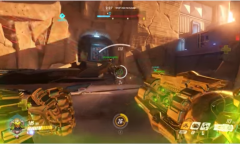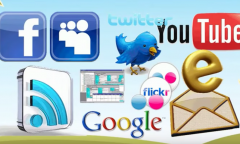By Vishal Goel, | April 08, 2017

Professor Coleman
In a first, researchers at Dublin have created printed transistors consisting of only two-dimensional nanomaterials. The researchers combined graphene nanosheets with conducting materials to make the transistor. The low-cost printed electronics can be applied in food packaging to display a digital countdown to warn of spoiling or on milk cartons to send notifications to phones about expiry.
Like Us on Facebook
Researchers in AMBER, the Science Foundation Ireland-funded materials science research centre hosted in Trinity College Dublin, say that they could also make wine labels that alerts one when his/her white wine is at its optimum temperature, or even a window pane that shows the day's forecast. The findings have been published in the Science journal.
This discovery opens the path for industries such as ICT and pharmaceutical, to cheaply print a host of electronic devices from LEDs to solar cells with applications from interactive smart food and drug labels to banknote security and e-passports.
An investigator in AMBER, Professor Jonathan Coleman said that the printed devices could be incorporated in future into even the most mundane objects such as posters, labels and packaging. Printed electronic circuitry could allow consumer products to gather, process, display and transmit information.
These 2D nanomaterials have the capability to yield cost effective and higher performance printed devices. However, only the first steps have been taken to demonstrate their worth in printed electronics. The significance of the publication lies more in its depiction of how insulating, conducting and semiconducting 2D nanomaterials can be combined together in complex devices.
In collaboration with the groups of Prof Georg Duesberg (AMBER) and Professor Laurens Siebbeles (TU Delft, Netherlands), Prof Coleman and his team used standard printing techniques to combine graphene nanosheets with two other nanomaterials, tungsten diselenide and boron nitride, to form an all-printed, all-nanosheet, working transistor.
Although these molecules are easily convertible into printable inks, they are somewhat unstable and have well-known performance limitations. There have been many attempts to overcome these obstacles using alternative materials, such as carbon nanotubes or inorganic nanoparticles, but these materials have also shown limitations in performance and/or manufacturability.
-
Use of Coronavirus Pandemic Drones Raises Privacy Concerns: Drones Spread Fear, Local Officials Say

-
Coronavirus Hampers The Delivery Of Lockheed Martin F-35 Stealth Fighters For 2020

-
Instagram Speeds Up Plans to Add Account Memorialization Feature Due to COVID-19 Deaths

-
NASA: Perseverance Plans to Bring 'Mars Rock' to Earth in 2031

-
600 Dead And 3,000 In The Hospital as Iranians Believed Drinking High-Concentrations of Alcohol Can Cure The Coronavirus

-
600 Dead And 3,000 In The Hospital as Iranians Believed Drinking High-Concentrations of Alcohol Can Cure The Coronavirus

-
COVID-19: Doctors, Nurses Use Virtual Reality to Learn New Skills in Treating Coronavirus Patients











